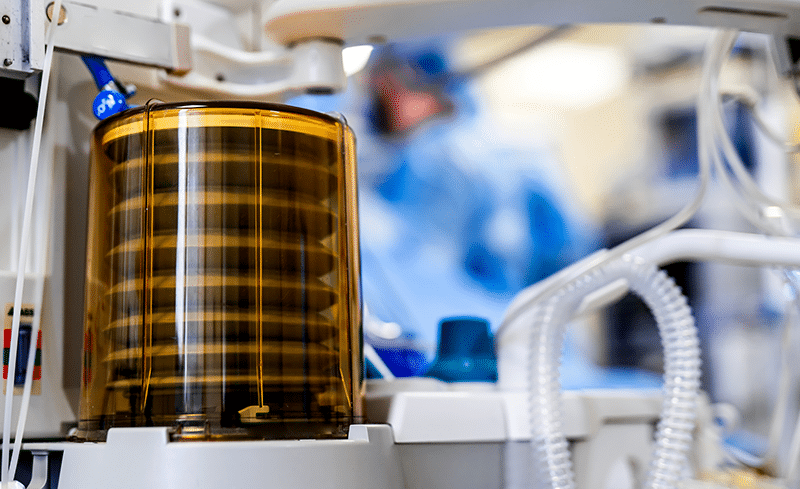Introduction
The implementation of the new EU Medical Device Regulation (MDR) just got a plot twist: COVID-19. This pandemic is impacting all areas of health care and is particularly troublesome for the medical device industry.
With the EU Commission putting out the proposal to delay the MDR, and the EU Parliament voting in an overwhelming majority to extend the MDR by one year, this has the industry wondering, “what can I do now to be ready for the new regulation?”
In this article, we discuss a few hot topics to consider as you assess impacts to your organization.
Clinical Trials
There’s no doubt that clinical trials will be heavily impacted. Between elective surgeries being canceled and an “all hands-on deck” mentality for health care providers around the world, research unrelated to COVID-19 treatment and vaccination is taking a back-seat to the pandemic spotlight. Inevitably, this means Post-Market Clinical Follow-up (PMCF) studies will suffer due to decreased opportunities for patient eligibility and collection of postoperative data.
Several regulatory authorities have released guidances (FDA, MHRA, EMA) on how to shift to remote monitoring for clinical trials. Even if the MDR is delayed, now is the time to get organized and prepare to hit the ground running with clinical data collection.
Immediate Action: Reassess clinical data readiness and apply released regulatory authorities’ guidances. Look for ways to integrate remote means of clinical trial operations and be sure to clearly document COVID-19 impact (e.g. sample size, change in methods, statistical considerations).
Opportunity: If you haven’t started filling your clinical data gaps, you should begin this now! With clinical trial delays an unfortunate reality, it’s an opportunity to catch up on planning activities such as PMCF plans. During the delay, consider if there are any untapped data sources that can be collected remotely while waiting for the pandemic to pass and how you will prioritize data collection after it does.
Manufacturing and Supply Chain
COVID-19 is having a significant impact on supply chains. During this pandemic, it is not “business as usual.” With non-essential sales and elective surgeries on the decline, manufacturers may be feeling supply chain disruptions as critical resources are prioritized over other products. Additionally, manufacturers are likely seeing a dip in sales for devices used primarily for elective procedures and surgeries (e.g. non-emergency joint replacements, hernia repairs, etc.). On the other hand, the growing demand for Personal Protective Equipment (PPE) and devices needed to identify, monitor, and treat COVID-19 patients may have tipped the scales for some products to continue to be supported under the MDR regime.
Working from home and safety protocols will also impact workforces. Some companies will see that their employees have more time to spend on activities other than their normal day-to-day duties. This may open up temporary resources for planning and maintenance of MDR programs while social distancing is being practiced.
Immediate Actions: Reassess marketing and sales projections with regard to MDR priorities. Consider how safety measures will impact production lines, as well as any impacts to resourcing and funding for MDR tech doc remediation programs.
Opportunity: What do the MDR and new product development teams have in common? They’re cross-functional. Likewise, COVID-19 has cross-functional impacts, meaning that now is an opportune time to think about who is working from home and perhaps unable to perform their duties at full capacity. Can you temporarily leverage these skill sets to expedite MDR remediation? (e.g. risk assessments, pulling documents, filling in gaps in the technical documentation, etc.)
Notified Body Readiness
With COVID-19 and the proposal to delay the MDR by one year, uncertainty remains regarding Notified Body (NB) readiness. The recent MDCG Guidance describes how NBs are to adapt their procedures during the pandemic, including guidance on implementing remote audits in some cases. With travel restrictions possibly being extended until there is a widespread vaccine available, it is advisable to plan on remote audits becoming a reality for longer than just a few months.
Given the result of the EU Parliament Vote on April 17, there is a chance that some manufacturers will have a bit of breathing room prior to being required to submit under the MDR. What does this mean? Moving the MDR date of application gives NBs an opportunity to continue being designated under the new regulation and ready to accept applications from manufacturers. This would be extremely beneficial as currently there are only 12 NBs designated!
Immediate Action: Check-in with your NB. Several have released COVID-19 responses (e.g. TUV SUD and BSI). Regardless, manufacturers should expect NB availability and reviews to be further delayed by the COVID-19 situation. With the MDR delay likely to be approved, consider if this changes your current approach for QMS procedure changes and audit schedules. Note the Medical Device Directive (MDD) certificate expiration dates and plan on submitting well in advance of the deadlines.
Opportunity: Take a second look at your submission plan—what’s your plan B, C, D, etc? Are you ready to implement Post-Market Surveillance (PMS) requirements? Will your Class I products be ready by May 2020? If the MDR is delayed as expected, does it make a difference? Leadership will be expecting that you understand the impact of these questions in order to secure MDR program funding.
Conclusion
The COVID-19 pandemic impacts clinical trials, manufacturing, and supply chains, as well as Notified Body readiness and other regulatory concerns. However, the takeaway is that the medical device industry must still be EU MDR compliant in a short amount of time! With most manufacturers reporting that they would not be able to meet MDR compliance by May 2020 and a significant NB shortage to support the implementation date, this delay may offer temporary relief to regroup and recharge. But don’t be fooled—delay does not equate to inaction. Rather, the industry should use this opportunity to take a fresh look at their MDR plans to ensure that all gaps have been identified and a solid, defendable plan is in place for when the time comes to submit their MDR-compliant technical documentation.
Final Takeaways:
- Don’t wait! The MDR delay only “kicks the can” one year and doesn’t address the bottleneck of MDR applications that will need to occur between 2021 and 2024. Now is the time to continue filling MDR gaps through the creation of PMCF plans and executing remote clinical data collection. It is imperative to strategically prepare and submit applications based on the business priority.
- The impact of COVID-19 will extend beyond a few months. Expect (and plan) for the worst, and hope for the best. Communicate clearly to upper management that the one year delay does not extend the “grace period” for valid MDD/AIMDD (May 2024 at the very latest, depending on your MDD certification expiry date). Keeping MDR program funding as a priority will allow appropriate preparations to be made and increase the likelihood of a successful transition from the MDD to the MDR.
- Take advantage of Castor’s solutions for continuing research under the pandemic, subscribe to our blog, and learn more about our new COVID-19 integrated research platform.

